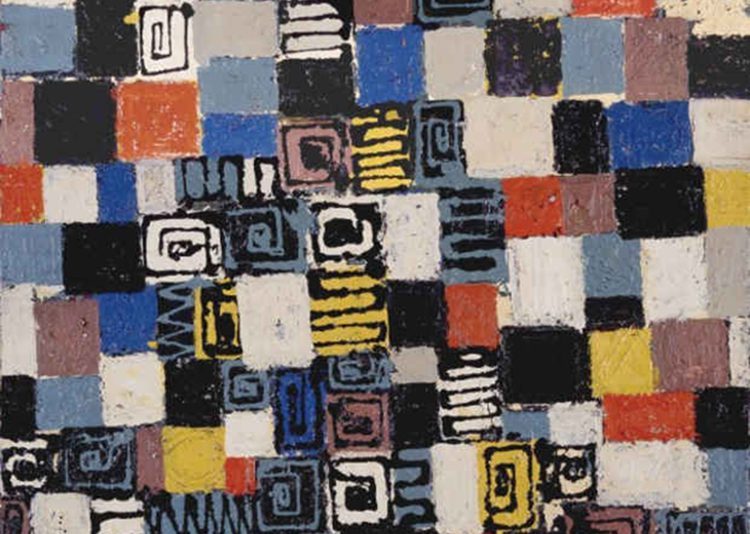ART-PRESENTATION: Lee Krasner
 The work of Lee Krasner was overshadowed by her husband, Jackson Pollock. While Pollock’s rugged persona and large-scale, wildly painted works would characterize American Contemporary Art, Krasner struggled, as her female identity would create complications within the theories of the movement. However, Lee Krasner was able to create a distinctive voice as an artist of the New York School.
The work of Lee Krasner was overshadowed by her husband, Jackson Pollock. While Pollock’s rugged persona and large-scale, wildly painted works would characterize American Contemporary Art, Krasner struggled, as her female identity would create complications within the theories of the movement. However, Lee Krasner was able to create a distinctive voice as an artist of the New York School.
By Dimitris Lempesis
Photo: Robert Miller Gallery Archive
The exhibition of works by Lee Krasner at Robert Miller Gallery is spanning the artist’s 50 years long career. The exhibition focuses on Krasner’s recurring themes and obsessions, her belief that she was “Never free of the past…” and that “…the past is part of the present, which becomes part of the future”. In viewing the work chronologically, her claim that, “All my work seems to swing back to something I was involved with earlier…” becomes increasingly clear and significant in understanding Lee Krasner’s art. The significance of Lee Krasner as a New York School artist lies in the tension between her gender and the prevailing thought of the time. While at the center of the movement due to her relationship to Jackson Pollock and studies with Hans Hoffman, she struggled to hold a prominent place in the art world because she was constantly at odds with the popular writing of Abstract Expressionism. As her teacher, Hans Hofmann once commented about one of her paintings, “This is so good you would not know that it was done by a woman”. Lee Krasner is considered one of the New York School’s most extensively educated artists, and perhaps this formal training had led to her initial struggle to connect with Abstract Expressionism. It was more than education that would complicate Krasner’s role in The New York School. Lee Krasner would find herself struggling to create artwork that was true to her but would not solely limit her to being female. Krasner’s 1955 exhibition of these works was positively received, prompting well-known and demanding critic Clement Greenberg to declare it one of the most important shows of the decade. The following year, Krasner began a large-scale Abstract Expressionist series called “Earth Green” after her husband’s death in a fatal car accident. Critics responded negatively to these works, which combined nature-inspired forms with a rhythmic, splattered technique, because they believed that the work was both derivative of Pollock’s and too feminine. In 1962, Krasner suffered an aneurism, which sidelined her artistic productivity for several years afterward due to ill health. In the following period, Krasner continued to work with her nature-forms in variety of ways, combining them with large areas of more solid color on her canvases. In the late ‘60s and ‘70s, her work experienced a revival due to the women’s movement. Krasner’s experimental techniques and innovative use of color and scale were finally recognized in her first retrospective exhibition in October 1983 at the Houston Museum of Fine Arts. Throughout her career, she directly confronted the dominant stereotype that “women can’t paint” and struggled within the Abstract Expressionist Movement, which prized masculinity and heroic figures such as Pollock. Krasner influenced other artists, including those from future generations, by her stylistic and artistic innovations, her example of persistence, and her ultimate triumph.
Info: Robert Miller Gallery, 524 West 26 Street, New York, Duration 21/4-4/6/16, Days & Hours: Tue-Sat 10:00-18:00, www.robertmillergallery.com



